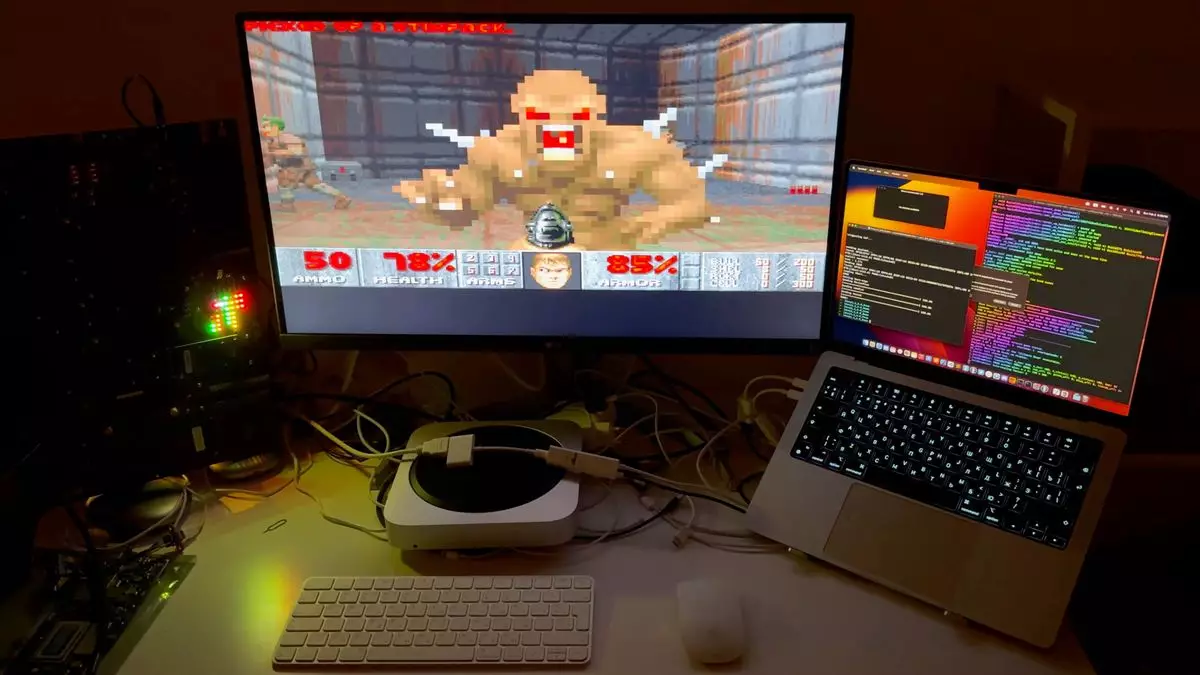The digital age has brought forth a wave of innovation and ingenuity, particularly in the world of video games. Among the most fascinating phenomena is the unrelenting quest of tech enthusiasts to push gaming beyond its conventional boundaries. The enduring legacy of id Software’s iconic shooter, Doom, serves as a prime example of this creativity. Individuals around the globe have found ways to run this 1993 classic on an array of unlikely devices, showcasing an unquenchable thirst for novelty and innovation in the gaming community.
Most recently, a surprising breakthrough emerged when gamers discovered that Apple’s Lightning to HDMI adapter could run Doom. This is quite a revelation, given the device’s primary function is to enable video output from iOS devices to external displays. However, a closer inspection unveiled the powerful hardware lurking within this seemingly innocuous accessory. The adapter is not merely a converter; it houses a Samsung 400 MHz Arm System on Chip (SoC) accompanied by 256 MB of RAM. Such specifications suggest that the adapter is a capable mini-computer, ready to handle the computational demands of a classic game like Doom.
Breaking Down the Hardware Secrets
What makes this discovery particularly commendable is the deft combination of hardware capabilities and software exploits. During a deep-dive investigation, YouTuber Nyan Satan employed a Checkm8 bootROM exploit, allowing custom code to be executed on the adapter. This ability to adaptively modify the hardware and enable gaming functionalities questions our preconceived notions about the roles of peripherals. The adaptability of such technology underscores a vital point: what we perceive as strictly functional gadgets can, indeed, become versatile gaming machines.
The Digital Fabrication of Fun
The implications of Doom running on an Apple HDMI adapter extend far beyond novelty; it prompts a discussion about the evolving landscape of gaming technology. The act of playing Doom—initially designed for modest PC specifications—on a device not originally intended for gaming serves as a testament to the game’s flexibility and timeless appeal. It illustrates that the barriers between hardware categories are becoming increasingly blurred, thanks to community ingenuity and technological advancements.
Doom’s remarkable adaptability is not a solitary milestone in the ongoing saga of tech innovations in gaming. Over the years, we have witnessed the game being executed on an astonishing variety of platforms, ranging from the improbable to the bizarre—satellites, pregnancy tests, and even Lego bricks. Each instance serves to reinforce the game’s status as a cultural touchstone, transcending traditional gaming boundaries and inspiring a generation of creators to explore the uncharted territories of technology.
The audacious idea of running Doom on an Apple HDMI adapter serves as a glowing reminder of the limitless potential within both gaming and technology. It embodies the ideal that with enough creativity and determination, even the most unconventional devices can play host to cherished classics, continuing to enrich our gaming experiences in unexpected ways.

